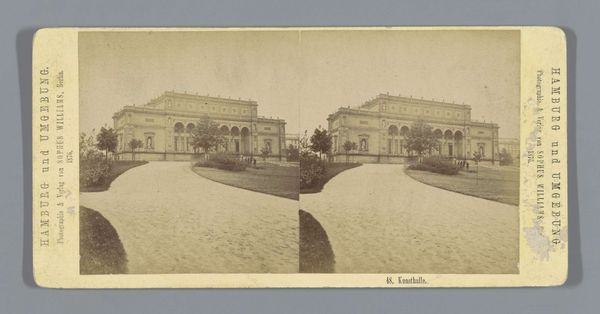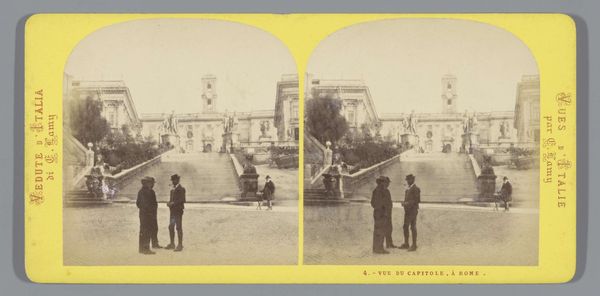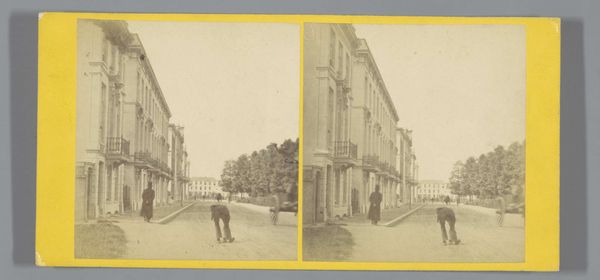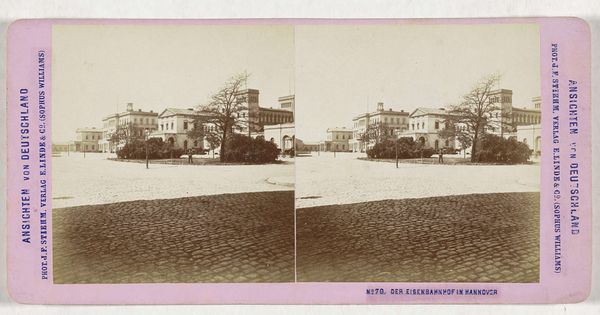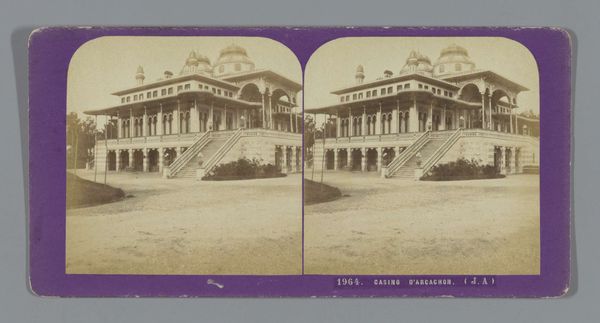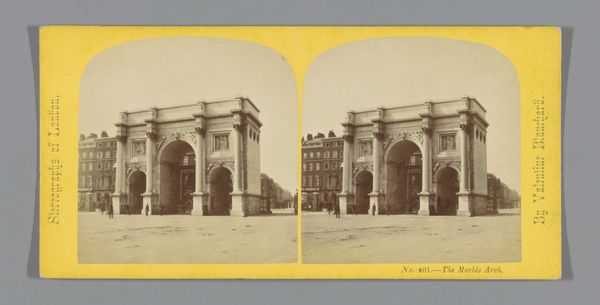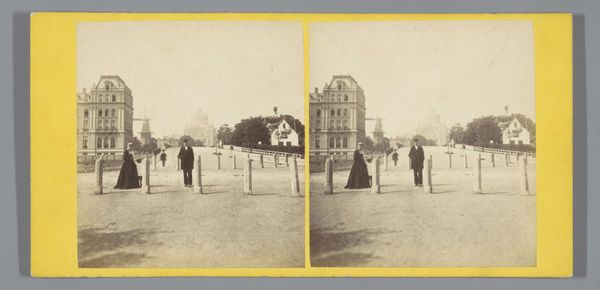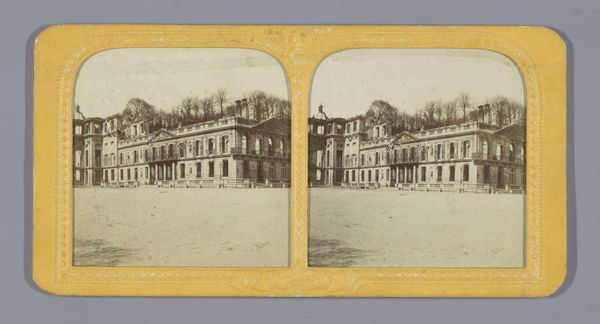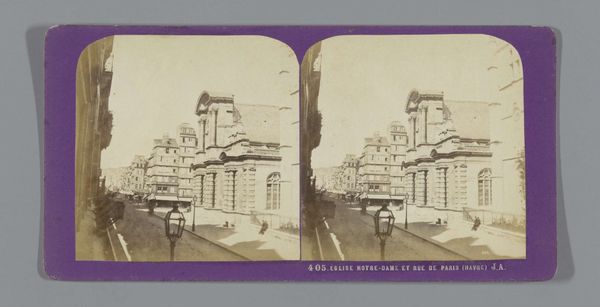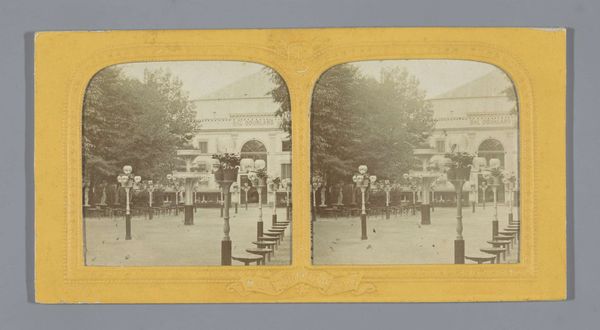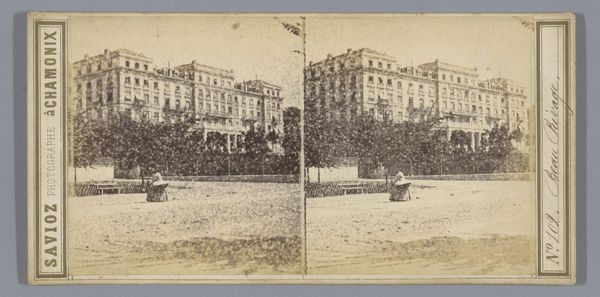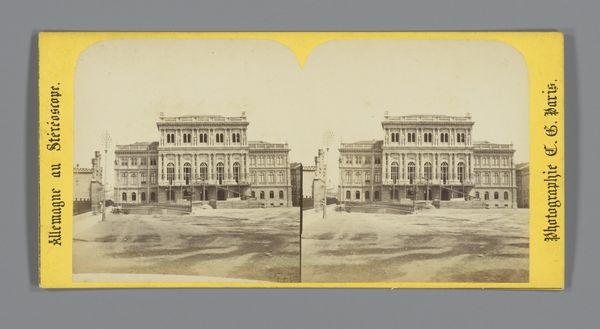
Gezicht op het paleis van Versailles, met op de voorgrond een man op de rug gezien c. 1860 - 1880
0:00
0:00
photography
#
landscape
#
photography
#
cityscape
#
building
Dimensions: height 85 mm, width 170 mm
Copyright: Rijks Museum: Open Domain
Curator: This stereo photograph by Ernest Eléonor Pierre Lamy, dating from about 1860 to 1880, captures a view of the Palace of Versailles. The foreground shows a figure with their back to the camera. Editor: My immediate sense is of emptiness despite the grand subject. The palette is quite muted, and the figure is so small, it only highlights the vast, almost desolate expanse of the courtyard. Curator: That emptiness, I think, reflects the complex layers of Versailles’ symbolic weight. It's not just a palace; it’s a symbol of power, of ambition, of an era of decadence, and the social structures that it created. The small figure suggests both an individual's place within this structure but also, maybe, their insignificance against it. Editor: Yes, there's that figure dwarfed by architectural immensity. Consider how the geometry dominates! The perfectly aligned buildings, the paved stones forming rigid lines towards a central vanishing point…it speaks of order, control, almost surveillance. Curator: And the back-turned figure could suggest the historical anonymity, where individuals were molded to serve and obey. It is very French, indeed. Consider the idea of 'gloire' – all must submit to the state! Versailles itself can be interpreted as the apex of that mindset. The photograph is about the burden as much as the privilege. Editor: I'm fixated on that flat lighting, though. It denies dramatic shadows and equalizes textures, presenting the facade as one unified plane, almost flattening the dimension and therefore the social complexities, paradoxically! It brings into question the reality that photographs are to give – like all things it is, and must be, subjective. Curator: I agree; there’s certainly that tension at play in the work! The flatness lends it an unsettling stillness, as if history itself is frozen, awaiting its judgment or a new course. The architecture looms still potent with meaning. Editor: Lamy’s photographic perspective then adds new facets to a very familiar symbol, prompting reflection on hierarchy, memory, and representation in an evolving world. Curator: Ultimately, this photograph encourages us to consider not just what Versailles was, but what it means to us, now, as its resonance changes.
Comments
No comments
Be the first to comment and join the conversation on the ultimate creative platform.
